Did you know that 53% of B2B and B2C website traffic comes from organic search? Many businesses need help attracting this crucial traffic, but effective SEO can enhance your visibility to potential customers.
Optimizing your website for search engines is essential for increasing traffic and forming a successful digital marketing strategy. This beginner’s guide focuses on best practices like keyword research and link building to help you compete with more prominent brands. Understanding SEO basics can level the playing field.
Effective SEO also involves using relevant keywords, improving search rankings, and enhancing user experience. A poor user experience can lead to high bounce rates, so improving meta descriptions can significantly boost your click-through rates and help your site rank better in search engine results pages (SERPs).
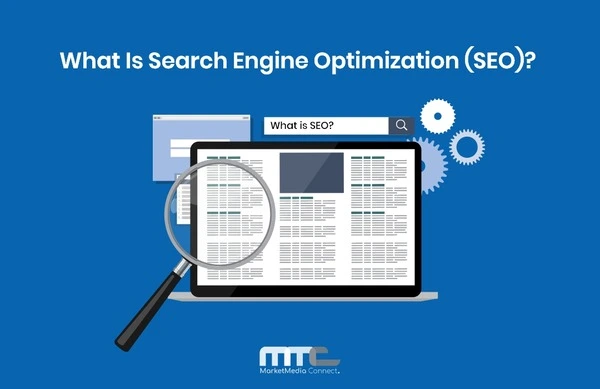
What is Search Engine Optimization (SEO)?
SEO is a search engine optimization it is a process of optimizing for higher rankings in search engine result pages (SERPs) defines search engine optimization (SEO). In contrast, SEO differs from advertising, which is pay-per-click (PPC) ads. With PPC, you pay search engines to display your website.
The distinction between PPC and SEO is a source of confusion for many businesses. Time and money can be wasted by investing in the incorrect strategy. However, you can direct your marketing strategy by realizing that PPC demands payment, whereas SEO offers organic visibility.
SEO involves optimizing your website content for well-researched targeted keywords; it also requires on-page and off-page SEO, which we will discuss in detail in this guide. First, let’s discuss the difference between the two major SEO strategies used: White and Black hat SEO.
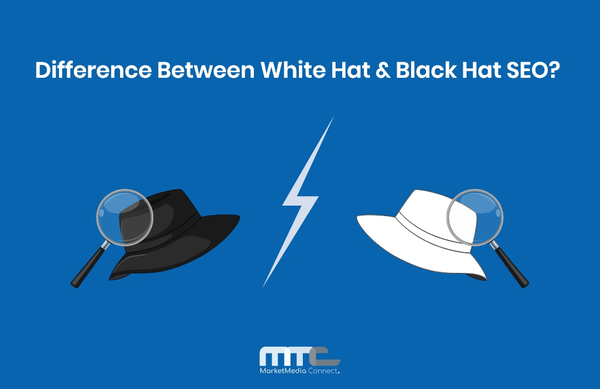
Difference between a White hat and Black hat SEO:
- White Hat SEO tactics are helpful. Using unethical SEO techniques is a common mistake made by beginners. Consequences resulting from black hat tactics can lower your website’s ranking. So, use white hat tactics and follow search engine guidelines like Google’s to guarantee long-term success.
- Conversely, in black hat SEO, the loopholes in search engines’ algorithms are exploited by using duplicate content and getting spammy backlinks. This practice often includes keyword stuffing and spamming, severely harming your search engine ranking. Although both strategies may show short-term effectiveness, only the ethical way prevails in the long run.
So, if you do black hat SEO, even if your site ranks right now, you will get penalized when search engines update. In summary, black hat techniques are short-term strategies, whereas White Hat SEO focuses on sustainable digital marketing success. For visibility and long-term growth in search results, always prioritize user experience and ethical practices.
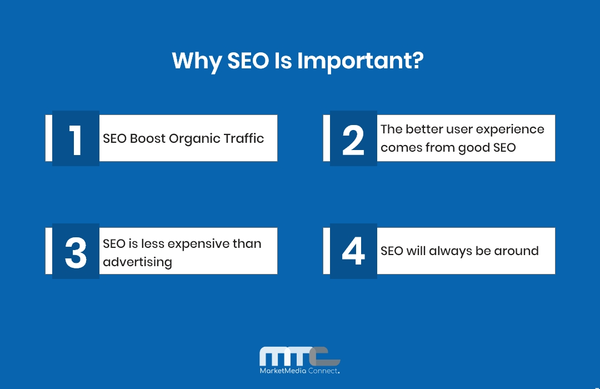
Why SEO is important?
Why should you implement SEO techniques and start learning SEO fundamentals? The answer lies in the many benefits that SEO has for your business. Many of you as a business are still determining if the investment in SEO is worth it. So, with SEO, you can avoid being overpowered by competitors. Since more people click on the first few search results, ranking higher on the SERPs will bring you more traffic.
Advantages of SEO For Your Business
SEO Boosts Organic Traffic:
SEO Boosts Organic Traffic
- SISTRIX reports that the top results have a click-through rate CTR of 28.5%.
- Furthermore, organic search significantly contributes to most businesses’ website performance. Low organic traffic can delay growth. Or paying for traffic through ads can drain your resources. So, an effective SEO strategy for beginners will substantially increase the website’s traffic without ongoing costs.
- Additionally, organic traffic is the best website traffic because you don’t have to pay anything.
- If your website appears on the first page of the SERP for a query, you may receive the majority of clicks and traffic.
The Better User Experience Comes From Good SEO
Google always prioritizes its users, so a good user experience comes with good SEO practices. Users often leave websites that need to meet their expectations. You might fear that failing to engage visitors can drastically reduce conversions. But no worries, with the Page Experience algorithm update in 2021, Google guarantees that a good user experience is also a website priority.
SEO is Less Expensive Than Advertising
Yes, SEO incurs costs, but all good things do. Businesses may feel overwhelmed by marketing expenses. Have you ever thought traditional advertising is costly? Well, Yes, it is. So what’s affordable, then?
SEO provides a cost-effective way to generate leads, allowing businesses to reach their target customers effectively and save money in the long run. Furthermore, SEO allows companies to track their progress using different analytics tools that will enable them to see how effective their efforts have been at generating leads and increasing conversions.
You can choose to hire an SEO agency to take care of the SEO of your website, or you can spend some time learning the fundamentals of SEO and take care of your SEO.
SEO will always be around
SEO may evolve in tactics and methods, but it will continue to exist. Several clients are choosing online retailers due to technological advancements. Therefore, if your SEO is effective, you will rank highly and be found by more people.
How do Search Engines Work?
As part of learning SEO fundamentals, it is crucial to understand how search engines work. Many beginners need clarification on the technicians of search engines. How search engines operate can slow optimization efforts. You can use Google as an example because it holds the largest market share, illustrating the crawling, indexing, and ranking process.
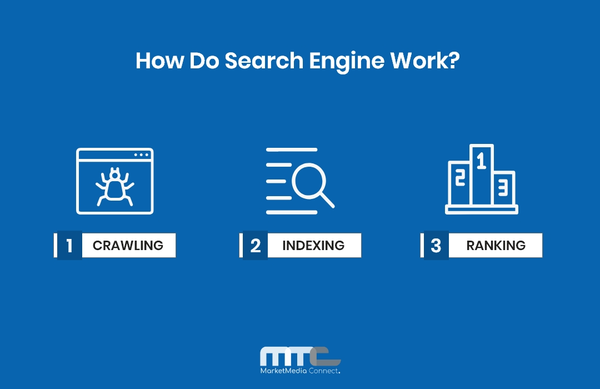
Before showing your website to users, Google has three stages: crawling, indexing, and ranking.
Crawling:
The first stage is to find which new content has come on the web. For this purpose, Google uses a program called Googlebot or crawlers. Specifically, Google’s algorithm crawls the links available on sites it already knows. You can do this by updating the website map. The bots collect all the data and send it back to Google. The bots collect all the data and send it back to Google.
Indexing:
After a page is crawled, the next stage is to save it into the extensive Google database. Duplicate content results in lower rankings, and you will be penalized for poor content practices that harm your visibility. So, to be safe, avoid keyword stuffing and ensure unique, high-quality content.
Search Engine Results or Ranking:
After all the new URLs are indexed in the database, when any user searches for a query, Google provides the most relevant results from the indexed pages, known as search engine results pages (SERPs).
To improve your search engine ranking, you must offer appropriate answers to what people search for on your website. Such factors include optimizing your meta descriptions and engaging in link building to increase backlinks, which enhances your site’s visibility.
SEO Components:
New users might feel lost among the various ranking factors, and understanding these factors can lead to effective strategies. So what’s the key? The key to successful SEO is to keep things simple. SEO consists of four major components: Technical SEO, On-Page SEO, Off-Page SEO, and Local SEO.
So, what are we chasing then? The key to a successful SEO effort is to keep things simple. When it comes down to it, SEO is made up of four major components:
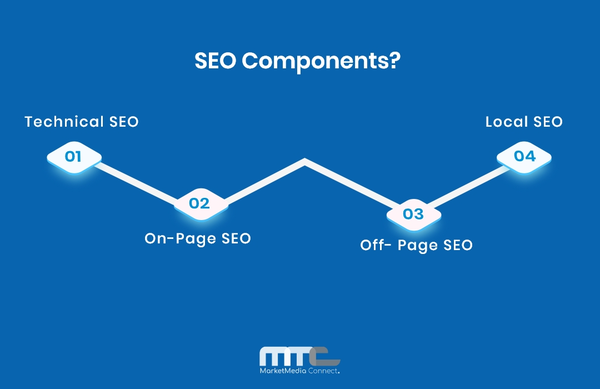
Technical SEO:
Technical SEO is all about optimizing your website’s structure so that it can be easily crawled and indexed by Google. You know websites with poor technical SEO will not indexed at all and if your site is not indexed, it will not appear in search results. So, you must use tools like the robots.txt file and sitemap to ensure proper indexing.
This aspect deals with the backend. People will never know what you did with your website on a technical level, but search engines will. To effectively implement the technical SEO strategy, you must use tools like the robots.txt file, sitemap, schema, redirects, and other speed optimization techniques.
Technical SEO optimization includes:
- Website Structure.
- Website and webpage speed
- URL structure.
- Proper redirects.
- The device is responsive.
- Website Security through an SSL certificate
On-Page SEO:
On-page SEO refers to everything you do to optimize actual web pages. Many beginners neglect on-page elements like titles and descriptions, and like this, poor optimization leads to lower search visibility. So, focus on keyword research, title tags, and meta descriptions to improve user engagement.
Content is one of the significant components of On-page SEO. Besides creating informational content to answer users’ search queries better, on-page SEO is also concerned with focused keywords for better search visibility. Since search engines are not humans, they can’t technically read and understand your content.
Part of on-page SEO involves including data and titles that help search engines understand the context of your content. On-page SEO tactics include:
- Keyword Research
- Title Tags
- Use of proper headers
- Meta description
- Internal Linking
- Image and video optimization
Off-Page SEO:
After you build a technically optimized website and do everything correctly in on-page SEO, the next step is off-page SEO. Gaining backlinks can be challenging. Without backlinks, your website might struggle to gain authority. So, to overcome this challenge, you can implement link-building strategies, such as guest posts and social media awareness, to enhance your site’s credibility.
You have a perfect website or business and must tell others about it. But how do you do it? This is where backlinks from other websites come into play. The websites linking back to your site say a lot about your business. This practice also helps increase your domain authority.
Off-Page SEO strategy involves:
- Link Building
- Guest posts
- Social Media Awareness
- Social Bookmarking.
Local-SEO:
Local SEO is all about making your business website visible for local searches. Local businesses often compete against larger companies, and when you are ignored in local searches, it will affect your traffic. So better optimize your Google My Business profile and use local keywords to improve visibility.
This strategy also includes using focused keywords to inform Google that you serve a particular area. You can create a separate page or section on your website containing the company’s address and phone number.
Local SEO strategy involves:
- Google My Business Profile
- Name, Address, and Phone Number (NAP)
- Local Citations.
- Online reviews.
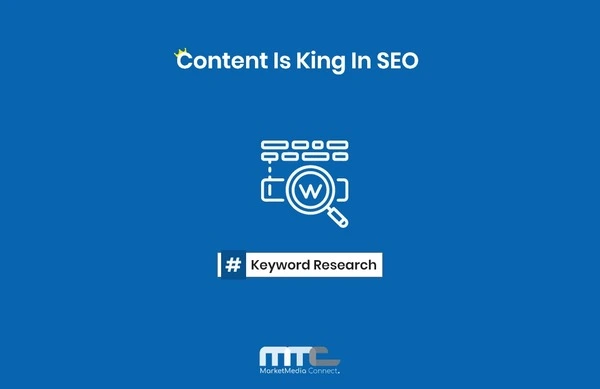
In SEO, Content is King:
You Know, In SEO, Content Is King
Are you wondering why content is king?
All the components mentioned above of SEO are nothing without high-quality informational content. If you want to engage your users for a long time or want them to return to your site, you must provide them with the content they are looking for.
As a result, Google considers many factors when ranking a website. However, it would only matter if you have the best website structure or the fastest loading speed if people can find what they want on your website.
If you provide people with what they want, they will likely stay on your site and visit other pages. Your users can also give you backlinks due to the quality of the content. These signals indicate Google’s algorithm that your website is helpful to users, so Google will rank your website higher in the SERPs.
The most essential element in writing content for your website is keyword research.
Keyword Research:
Finding new topics to write about takes a lot of work. However, keyword research makes it easy to decide what to write for your site to get more traffic. Keyword research is the process of discovering what your audience is searching for.
It also includes how much traffic there is for a particular keyword and how difficult it is for you to rank for it. Many paid and free tools on the market help you find keywords and topic ideas.
These include:
- Google keyword planner,
- Ahrefs,
- Ubersuggest, and many others.
As a beginner, these tools may appear complicated because you may need to become more familiar with SEO terminology. Examine what others in your industry are writing about, or use Google’s search suggestions to generate topic ideas. If you type a word in the search bar, Google will suggest what others are searching for related to that word.
SEO in a Nutshell:
We have discussed in detail what SEO is and why it is important for your business.
To summarize everything, SEO consists of five major steps. which are as follows:
- Keyword Research: This is to find what people are looking for.
- Content Creation: Once you’ve determined what people are looking for, create high-quality content that addresses the user’s intent.
- On-Page SEO: Use proper headings and optimized images in your content. It helps to increase the user experience.
- Link Building: Make an effort to gain trust and authority from other websites.
- Technical SEO: Always keep your website’s structure simple so that it can be easily crawled and indexed by search engine bots.
You can study and conduct research on any of these steps to further advance your SEO learning.
Most Recent Data on SEO Effectiveness
The table shows the recent insights of SEO results.
Statistic/Issues
|
Value
|
Description/Solution
|
| Organic Search Traffic |
53% ROI |
Organic searches generate over half of all website traffic. Carefully consider content marketing and keyword research to increase traffic. |
| Cost-Effectiveness |
748% ROI |
When compared to paid advertisements, SEO provides a higher return on investment. Utilise free resources and low-cost tactics to maximize already-existing content. |
| Click-Through Rates (CTR) |
75% clicks |
The top three positions in search engine results receive 75% of all clicks. So, are you using SEO and high-quality content to optimize for higher rankings? |
| User Experience Impact |
Positive |
Good SEO increases user satisfaction and lowers bounce rates. Perform audits to improve usability and loading times. |
| Conversion Rates |
30% increase in conversion rate |
For SEO leads, the average conversion rate is much higher. Make landing pages more user-friendly by optimizing them. |
| Local Search Importance |
78% of conversions offline and 46% of local searches |
demonstrate how important local SEO is for companies. Increase visibility by using local keywords and optimizing Google My Business. |
| Long-Term Benefits |
59% of SEO campaigns produce a good return on investment. |
Within a year, many businesses see a return on their investment in SEO. Use analytics tools to track progress regularly. |
Conclusion
In short, search engine optimization (SEO) is a must-have tool for anybody looking to improve website traffic. However, many businesses hesitate to invest in SEO due to misconceptions, but without it, your site risks being lost in the digital geography. Therefore, utilizing the techniques in this guide can significantly improve visibility on Google and other search engines. Although SEO seems complex, our beginner’s guide simplifies the process.
Good SEO provides a competitive edge for any company, regardless of size. Understanding how search engine crawlers work is essential for increasing visibility and involves technical research, link building, and optimizing alt text and meta descriptions. Remember, SEO takes time; expect changes in organic metrics and click-through rates within two to three weeks. Stay patient, and the results will lead to increased traffic and leads.
FAQs
What is the first step in the SEO process for your website?
Researching keywords is the first step in the SEO process for your website. You may choose which keywords to target and what kind of content to produce after you know what your audience wants.
How does on-page SEO work?
On-page optimization (SEO) is a subset of SEO that raises a page’s position in relevant search results. On-site optimizations focus on a page’s source code and content. They include Content creation and optimization for user intent.
How to get 100% SEO?
By focusing on the following elements, you will achieve 100% SEO results:
- Your every page needs to function.
- The meta tags are required on every page.
- Relevant headings and subheadings are necessary for pages.
- You must use BlogPatcher for content optimization.
- Always reduce the picture files’ size.
What is the basic knowledge of SEO?
SEO requires producing and providing reliable and valuable information on a particular subject. Additionally, you can optimize it for search engines so that your company may appear when potential clients search for relevant terms.
Do I need SEO on every page?
Many might need to learn that SEO represents a grouping of best practices that increase a website’s placement in Google search results. Hence, optimizing each web page is critical if your company website has several, such as one for each product or service you provide.
